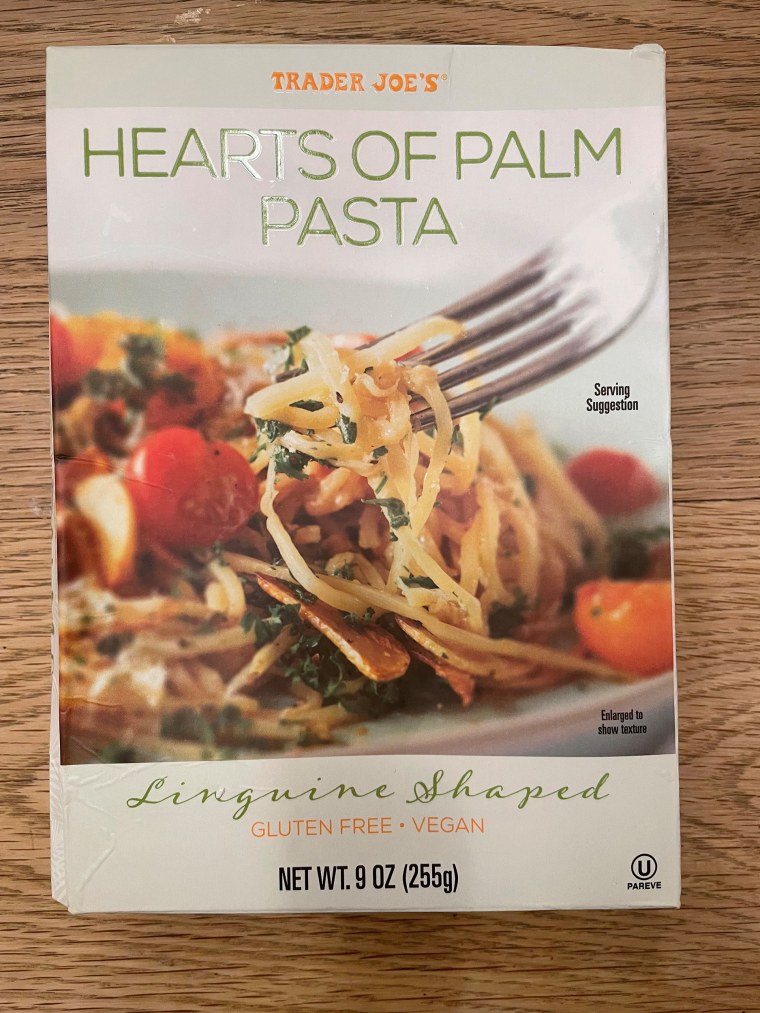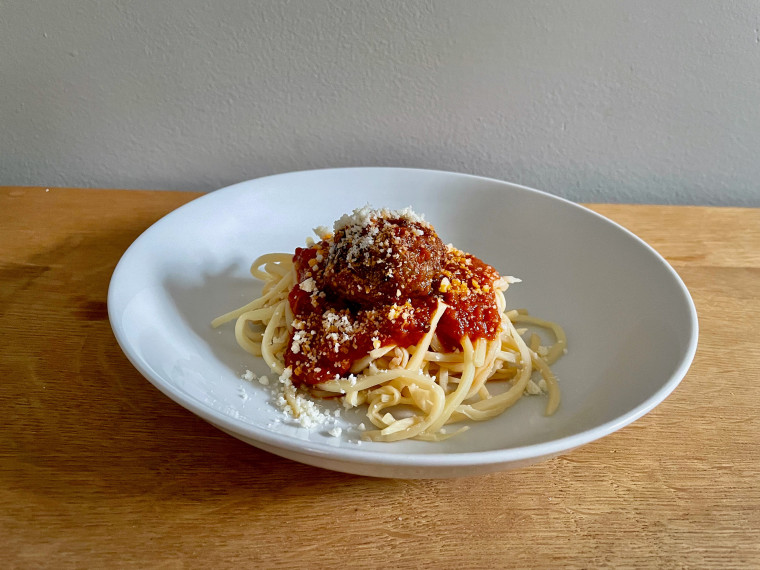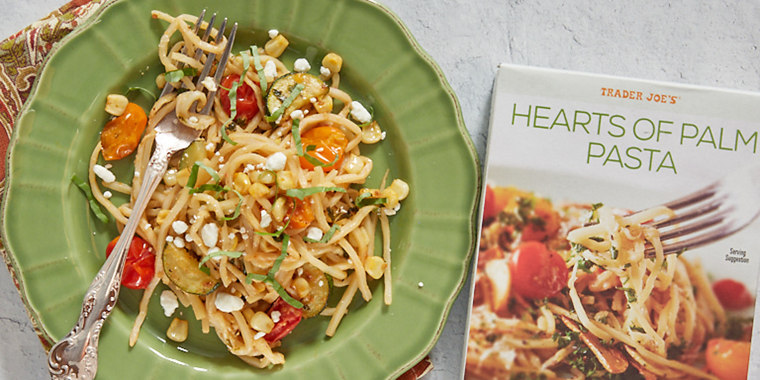Every once in a while, Trader Joe’s comes out with a product that immediately garners cult status (we’re looking at you, soy chorizo). Its Hearts of Palm Pasta is one of the newer hits. In fact, according to Jasmine, the category manager of grocery at the chain, who was featured on the Inside Trader Joe's podcast, the Hearts of Palm Pasta is its "number-one selling pasta."
When I Googled the product, I found over half a million results. Most of the reviews were positively glowing, so I had to give it a try myself.
There are numerous low-carb noodle options on the market, but many of them feel like a major compromise in terms of taste and texture. Other veggie-based noodles, like zucchini noodles (aka zoodles) and sweet potato noodles may be noodle-shaped, but they still look and taste like vegetables. Hearts of palm noodles on the other hand, are super noodle-like in texture and appearance.
What is hearts of palm pasta?
So, what exactly is pasta made from the hearts of palm? Hearts of palm come from the center (aka "heart") of the cabbage palm tree, which grows in Ecuador, as well as Florida and South Carolina. The hearts of the trees look kind of like white asparagus but have a much subtler flavor. To make noodles from them, the hearts are cut into linguini-shaped pieces. Trader Joe’s packages them in plastic pouches, which are shelf-stable.

What’s made the Trader Joe’s noodles so popular is that each serving has a mere 20 calories, 0 grams of fat, 2 grams of fiber, 4 grams of carbs, 0 milligrams of sodium and less than 1 gram of protein. This is in comparison to linguini made from wheat, which serves up 200 calories, 0 grams of fat, 3 grams of fiber, 42 grams of carbohydrates, 0 milligrams of sodium and 7 grams of protein per serving. Like other vegetable-based noodles, hearts of palm pasta is also gluten-free and vegan.
There are other hearts of palm noodles on the market, like the "Shark Tank"-funded Palmini, but they come with 60 milligrams sodium per serving. Not a deal breaker, but if you eat more than the serving size of noodles (which is quite easy to do) plus sauce, you can start racking up serious sodium.
How to use hearts of palm pasta
You can simply open a pouch of TJ’s Hearts of Palm Pasta and heat it in a pan for a few minutes. Serve it with tomato sauce and Parmesan, or toss it with stir-fried veggies and diced chicken. The noodles themselves are very neutral-tasting, with a subtle artichoke flavor, which makes them quite versatile.

My family liked the pasta with meatballs and sauce but could tell that they weren’t "normal" noodles. I am a sucker for a cold sesame noodle salad, so I tried out the hearts of palm pasta in this 4-Ingredient Cold Sesame Noodle recipe. It made for a quick and tasty lunch.
The conclusion: I'm not ready to give up my semolina pasta or chickpea pasta just yet, but I'll keep a couple of boxes of these no-cook noodles on the shelf for quick and easy plant-based weeknight meals.











